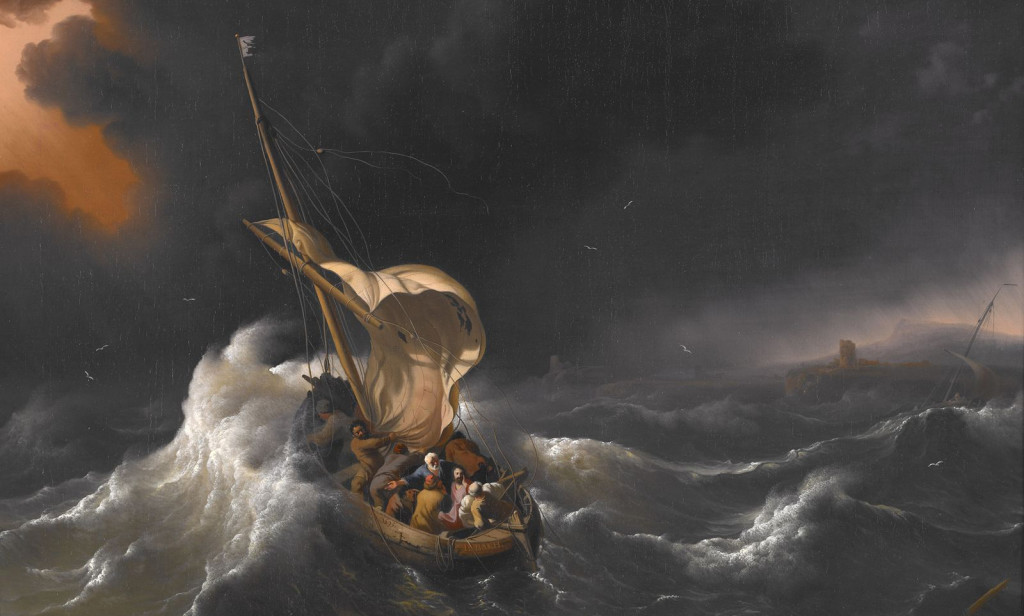“[T]he symbol of a ship always delights me and helps me to bear the exile of this life. Does not the Wise Man tell us—”Life is like a ship that passeth through the waves: when it is gone by, the trace thereof cannot be found”? – Saint Thérèse of Lisieux, The Story of a Soul.
[featured-image single_newwindow=”false”]
The world we live in today has lost the sense of journey. Many of us, instead of seeing our lives as a great adventure to reach the final destination of Heaven, are intent on focusing only on the here and now to fulfill all our earthly pleasures. As each generation passes, we resemble more and more the People of Israel who when challenged by God to fast and do penance instead said to themselves, “Let us eat and drink; for to morrow we shall die” (Isaiah 22:13).
We need to recover this sense of journey in our lives, for we are all on a journey: the pilgrimage of life. We need to rekindle in our culture this disposition so that many souls can get out of the harbor and launch forward to distant lands. Just like any sailor desiring to be out at sea in unfamiliar waters, we need a GUIDEBOOK to show us the way to the shores of Everlasting Life.
Introduction Part I
First off, before we dive into our GUIDEBOOK, let us examine this ancient analogy of the Christian soul on a journey. This typology is found most explicitly in the Synoptic Gospels when Christ takes His apostles and travels to the other side of the Lake of Gennesaret, calming a storm while they are at sea.
Discipleship
“The sea is the turmoil of the world; the boat in which Christ is embarked is to be understood as the tree of the cross, by the aid of which the faithful having passed the waves of the world, arrive in their heavenly country, as on a safe shore, whither Christ goes with His own.” – Rabanus in Catena Aurea on Mt. 8:23-27
This episode in the Gospels has been used as an analogy of the life of the individual Christian and the call to discipleship. In context, this passage in Matthew is preceded by an episode where two men seek Jesus and ask to follow Him, yet He challenges them to leave behind what they had to embrace a new life (Matthew 8:18-22).
Similarly in Luke, Jesus expounds on what it truly means to be “His mother and His brethren,” by showing that only those who “hear the word of God and do it” are His true mother and brethren (Luke 8:19). What is important in Matthew is how he connects the two episodes by using the word “follow” for both the men who seek to “follow” Him as well as the disciples who “followed” Jesus into the ship.[i] In doing so, Matthew “suggests that the journey across the sea is a parable for the journey of discipleship.”[ii]
This becomes even more evident, for just as Jesus challenged the would-be followers in both Gospels to lead a life different than what they expected, His disciples are “immediately put to the test” by the storm which surrounds them.[iii] Those who wished to follow Him are therefore led by Jesus into the midst of the sea in order to be tested—to see how well they can “hear the word of God and do it.”
The Gospel of Mark also places this episode within the context of discipleship, albeit through the use of parables. In particular, Mark precedes this passage with parables concerning the expansion of the kingdom of God, implying that Jesus’ mission is not solely to the apostles.
The parables used by Jesus both concern “seeds,” with the last parable concerning the kingdom of God being likened to a “mustard seed” that grows into an enormous shrub, thereby showing how the kingdom will greatly expand from the small band of apostles.[iv]
The “other side of the lake” that they were sailing to contained the “Decapolis” and was known as “Gentile territory.”[v] By crossing the sea, Jesus and His disciples were “crossing the barrier between Jew and Gentile.”[vi] In fact, Jesus’ act of crossing to the “other side of the lake” invites His disciples to follow Him on “his first ‘foreign mission’” to preach to the Gentiles, thereby fulfilling the growth of the kingdom that was referred to in the parables.[vii]
In light of Christ’s action in calling His disciples to join him in the boat, we too must “get in the boat” with Christ and travel to the “other side.” However, this image of traveling in a boat with Christ to the “other side” has another aspect to it besides preaching to the Gentiles. It also is an analogy of the entire Christian life, where we are meant to travel in the “bark of Peter” in the company of Christ to reach the Eternal Shores of Heaven.
Over the next several weeks we will explore this analogy in greater detail through a series of articles entitled: “Guidebook for the Pilgrim Soul.” These articles will focus on reorienting our lives to see the bigger picture of who we are and where we are going. I will be using the analogy of a ship sailing toward distant lands as an image of the spiritual life and the articles will function as part of a “GUIDEBOOK” that would be given to souls who are desiring to embark upon this worthy quest. As we go forth, let us make sure that our ship is pointed in the right direction so that we find ourselves at journey’s end in the Blessed Realm of Heaven.

